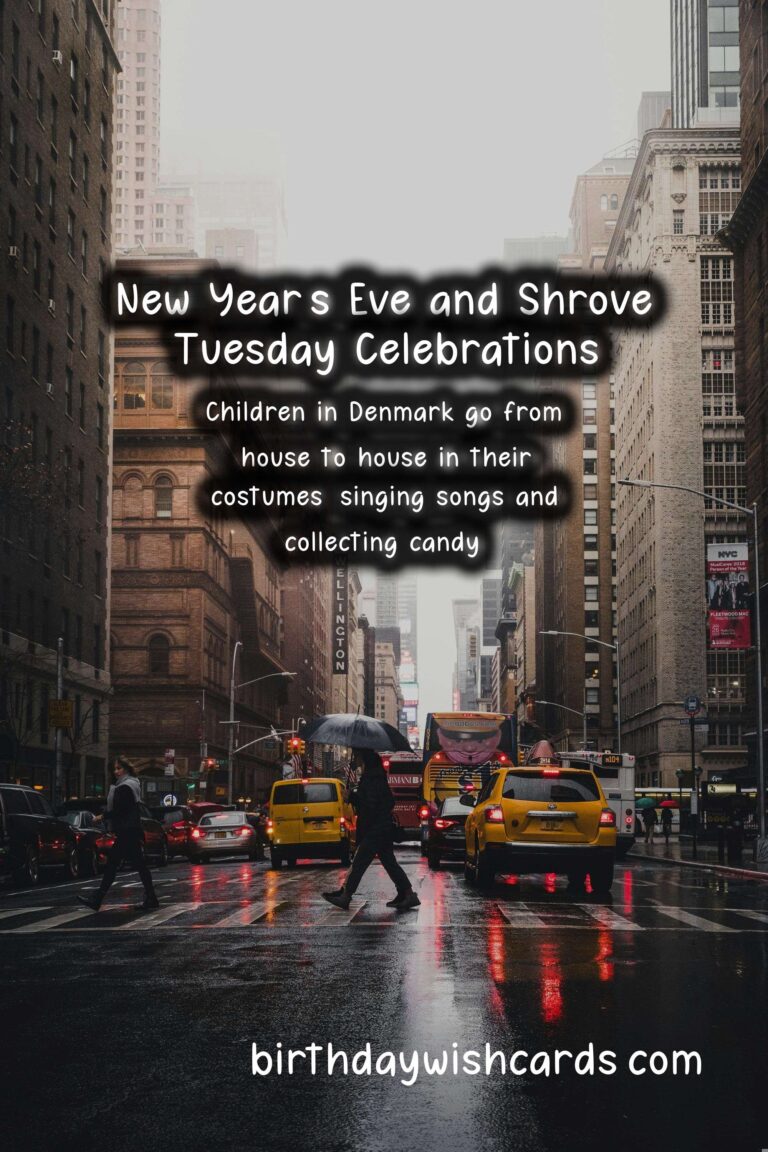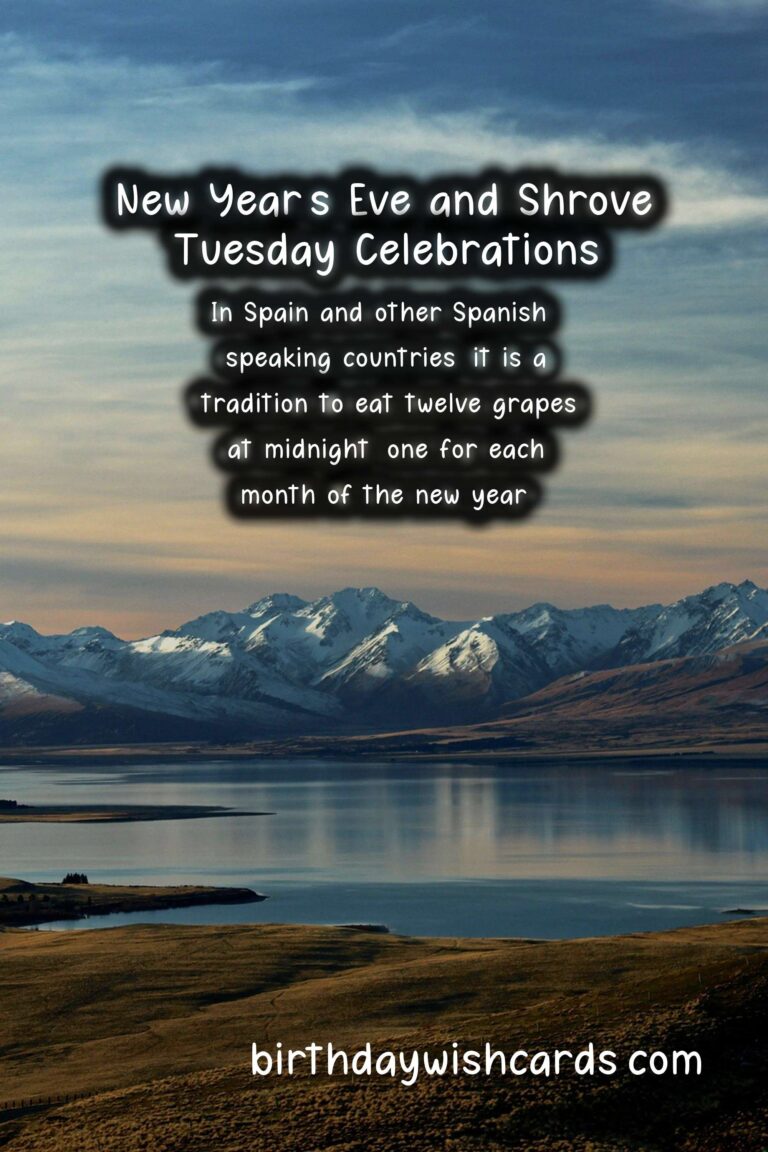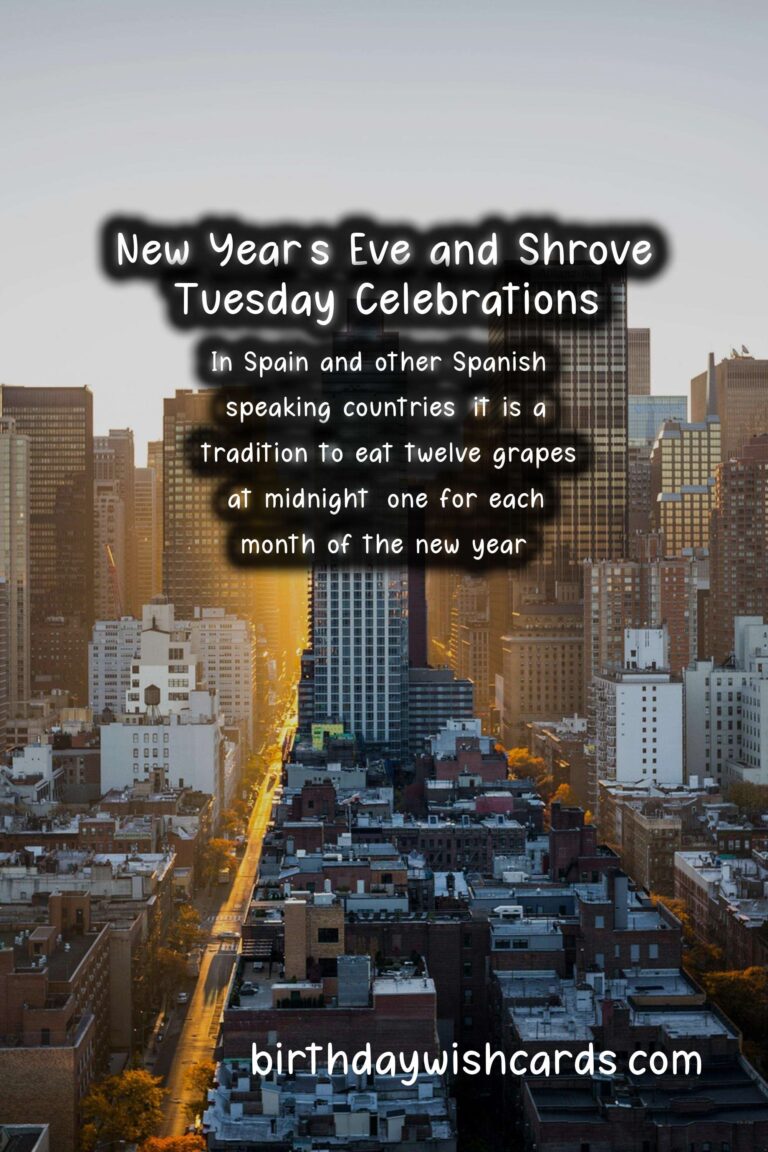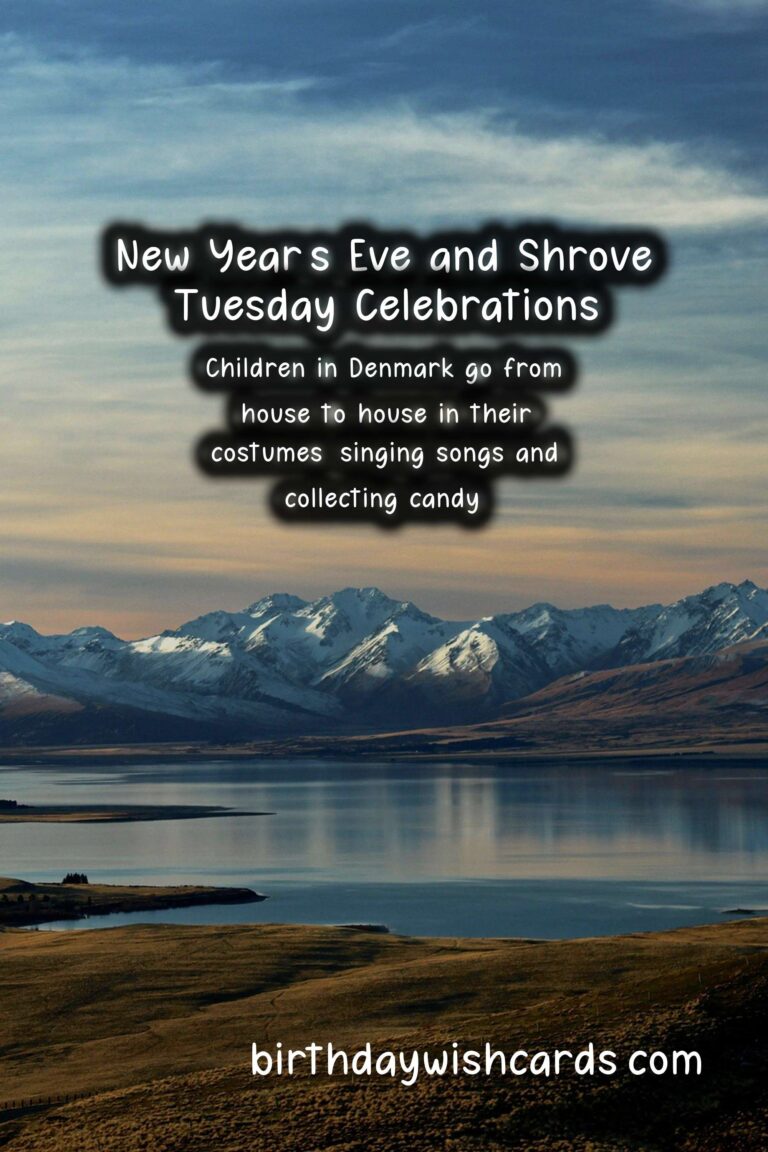 New Year’s Eve and Shrove Tuesday are two festive occasions that are celebrated around the world. Each one has its own unique traditions and customs, but both are occasions for joy and celebration. Let’s take a closer look at how these two holidays are celebrated in different parts of the world. New Year’s Eve, also known as Nochevieja in Spanish, is celebrated on December 31st. It marks the end of the old year and the beginning of the new one. Many people gather with friends and family to count down the final seconds of the year and welcome the new one with fireworks, champagne, and lots of cheering and singing. In Spain and other Spanish-speaking countries, it is a tradition to eat twelve grapes at midnight, one for each month of the new year. This is believed to bring good luck and prosperity for the year ahead. In Brazil, it is common to wear white clothing and go to the beach to watch fireworks and make offerings to Yemanjá, the goddess of the sea. In many Asian countries, such as China, Japan and South Korea, New Year’s Eve is a time for family reunions and elaborate feasts. Some common customs include cleaning the house to sweep away any bad luck, and eating foods believed to bring good luck such as dumplings, rice cakes, and noodles. On the other hand, Shrove Tuesday or Fastelavn in Denmark is celebrated in February or March, depending on when Easter takes place. It is the last day before the start of Lent, a period of fasting and reflection for Christians. To prepare for the upcoming weeks of austerity, people often indulge in rich and fatty foods on Shrove Tuesday. In Denmark, one of the most popular foods on this day is the Fastelavn Bun, a sweet bun filled with cream and topped with powdered sugar. In other countries such as the UK, Shrove Tuesday is also known as Pancake Day, and people enjoy making and eating pancakes in all sorts of creative ways – with syrup, fruit, chocolate, and more. Another common tradition on Shrove Tuesday is the practice of making and wearing masks and costumes, often inspired by old folk tales and stories. Children in Denmark go from house to house in their costumes, singing songs and collecting candy. There are also games and competitions involving the breaking of a barrel filled with candy and toys, called a Fastelavnsris. Whichever child finally breaks the barrel is crowned the Fastelavnskonge or Fastelavnsdronning, aka the King or Queen of Fastelavn. These are just some of the many traditions and customs associated with New Year’s Eve and Shrove Tuesday. No matter where you are in the world, these celebrations are a great opportunity for everyone to come together and enjoy good food, company, and festivities. So make sure to mark your calendars for these two special occasions and spread the joy and cheer with your loved ones.
New Year’s Eve and Shrove Tuesday are two festive occasions that are celebrated around the world. Each one has its own unique traditions and customs, but both are occasions for joy and celebration. Let’s take a closer look at how these two holidays are celebrated in different parts of the world. New Year’s Eve, also known as Nochevieja in Spanish, is celebrated on December 31st. It marks the end of the old year and the beginning of the new one. Many people gather with friends and family to count down the final seconds of the year and welcome the new one with fireworks, champagne, and lots of cheering and singing. In Spain and other Spanish-speaking countries, it is a tradition to eat twelve grapes at midnight, one for each month of the new year. This is believed to bring good luck and prosperity for the year ahead. In Brazil, it is common to wear white clothing and go to the beach to watch fireworks and make offerings to Yemanjá, the goddess of the sea. In many Asian countries, such as China, Japan and South Korea, New Year’s Eve is a time for family reunions and elaborate feasts. Some common customs include cleaning the house to sweep away any bad luck, and eating foods believed to bring good luck such as dumplings, rice cakes, and noodles. On the other hand, Shrove Tuesday or Fastelavn in Denmark is celebrated in February or March, depending on when Easter takes place. It is the last day before the start of Lent, a period of fasting and reflection for Christians. To prepare for the upcoming weeks of austerity, people often indulge in rich and fatty foods on Shrove Tuesday. In Denmark, one of the most popular foods on this day is the Fastelavn Bun, a sweet bun filled with cream and topped with powdered sugar. In other countries such as the UK, Shrove Tuesday is also known as Pancake Day, and people enjoy making and eating pancakes in all sorts of creative ways – with syrup, fruit, chocolate, and more. Another common tradition on Shrove Tuesday is the practice of making and wearing masks and costumes, often inspired by old folk tales and stories. Children in Denmark go from house to house in their costumes, singing songs and collecting candy. There are also games and competitions involving the breaking of a barrel filled with candy and toys, called a Fastelavnsris. Whichever child finally breaks the barrel is crowned the Fastelavnskonge or Fastelavnsdronning, aka the King or Queen of Fastelavn. These are just some of the many traditions and customs associated with New Year’s Eve and Shrove Tuesday. No matter where you are in the world, these celebrations are a great opportunity for everyone to come together and enjoy good food, company, and festivities. So make sure to mark your calendars for these two special occasions and spread the joy and cheer with your loved ones. 













